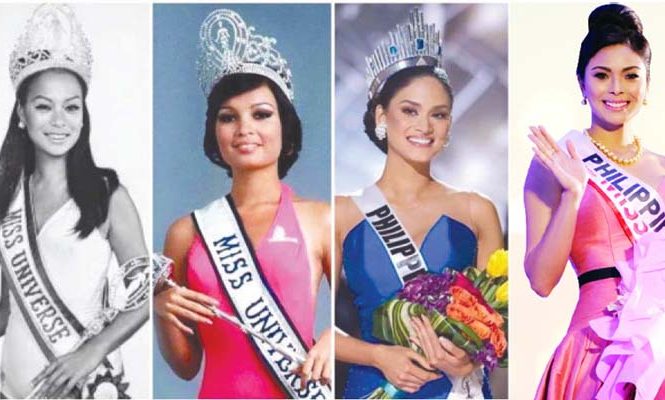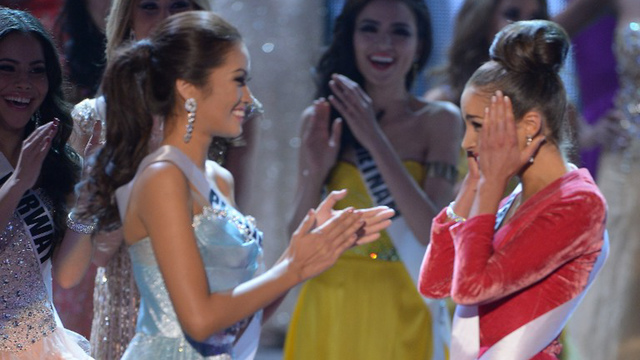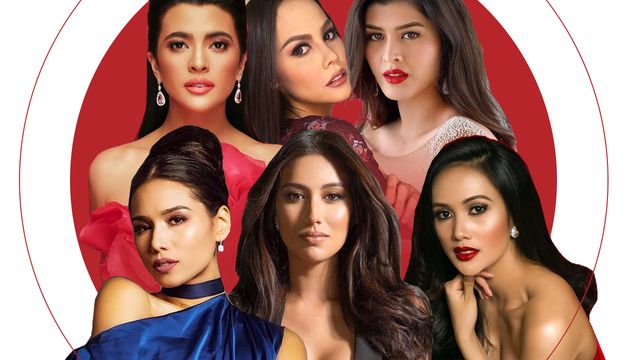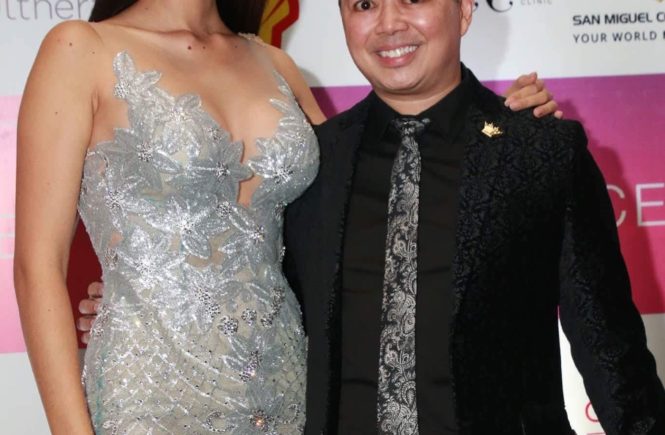Have you ever noticed how Filipinos love to emphasize and celebrate the “foreign blood” of mixed-race Filipinas? Think Solenn Heussaff, Anne Curtis, and Georgina Wilson. Many have come before them. These celebrated mixed-race celebrities aren’t the first. Certainly, they won’t be the last.
Abroad, it’s the other way around. A celebrity of mixed-heritage in the international scene is quick to boast of her “Filipino blood,” no matter how little. Nicole Scherzinger, Tia Carrere, Vanessa Minillo Lachey, and Vanessa Hudgens come to mind.
In beauty pageants, one often hears these comments: “Isn’t she too foreign-looking to be considered a Filipina beauty? Parang ’di na siya Pinay.”
Which brings us to the question: What exactly is a Filipina beauty?
Obviously, there’s no credible and scientific way to go about defining what is essentially an intangible quality or something inherent such as race. To begin with, in a globalized world, race has become quite difficult if not impossible to define.
Up until the 1990s, not a few beau-con watchers clung to the belief that morena beauties should be sent to Miss Universe and doll-like, tall, mestizas be sent to Miss International. I think these generalizations stemmed from references to successful delegates to both contests in the past.
The morena or Filipina beauty triumphed in Miss Universe with the likes of Gloria Diaz, who’s really mestiza, but was packaged as a Filipina beauty (Miss Universe 1969), Chiqui Brosas (1975 fourth runner-up), Chat Silayan (1980 third runner-up), Desiree Verdadero (1984 third runner-up), and Miriam Quiambao (1990 first runner-up). Then you have the mestizas doing well in Miss International such as Aurora Pijuan (Miss International 1970), Yogi Dominguez (1972 second runner-up), and Melanie Marquez (Miss International 1979).
But this long-standing belief isn’t full proof. Margie Moran (Miss Universe 1973), Guada Sanchez (Bb. Pilipinas Universe 1974), and Charlene Gonzalez (Bb. Pilipinas Universe 1994) were the epitome of mestiza beauties who did quite well in Miss Universe. In 2005, Precious Lara Quigaman, a relatively short, morena from Laguna, finally shattered another stereotype to win Miss International.
The chinita beauty wasn’t as successful in Bb. Pilipinas. But there had been notable chinitas who won big much earlier like Geraldine Asis (Bb. Pilipinas Universe 1987), Marina Benipayo (Bb. Pilipinas World 1992), Caroline Subijano (Bb. Pilipinas World 1994), and Carlene Aguilar (Bb. Pilipinas World 2005).
In recent years, the Philippines’ dominance in the international pageant scene has become unquestionable. For the past two years, every titleholder of Bb. Pilipinas has either become a semifinalist, a runner-up, or the winner. What is most noticeable is the diversity of the types of Filipina beauties we now sent to these contests. We not only have mestizas, morenas, and chinitas. We also have our beautiful mixed-heritage queens.
Exemplifying the Filipina morena beauty is Miss Supranational 2013, Mutya Datul. If she were blessed with better communication skills, I truly believe she deserved to be sent to Miss Universe, where she had a fighting chance to win our third crown.
Had that happened, Pia Wurztbach, Miss Universe 2015, would have been our fourth Miss U. Pia is a stunning example of the Eurasian-Filipina beauty, as she is of Filipino-German blood. Her Filipino lineage based on her beautiful and fair-skinned mother could very well be a mixture of other bloods as well.
We also have Filipino-Indian beauties like Venus Raj (Miss Universe Philippines 2010 and Miss Universe 2010 fourth runner-up) and Parul Shah (Bb. Pilipinas Tourism 2014 and Miss Grand International 2015 second runner-up), and a Filipino-Arab stunner like MJ Lastimosa (Miss Universe Philippines 2014).
The 2016 Bb. Pilipinas titleholders represent a wide variety of Filipina beauties. Maxine Medina is said to be pure Filipino with Chinese and mestiza extractions. Kylie Verzosa (Miss International 2016) is also Filipina with mestiza features. Jennifer Ruth Hammond (Bb. Pilipinas Intercontinental 2016) is unmistakably a Filipina of mixed Caucasian descent. Nicole Cordoves (Bb. Pilipinas Grand International 2016) is of Filipino-Chinese heritage.
The changing trend of beauties in Bb. Pilipinas may also be representative of the times. Up to the 2000s, there were less Filipinas of mixed heritage who joined Bb. Pilipinas. Most were Filipino-Americans, Filipino-Chinese, or Filipino-Spanish. The continued migration of Filipinos abroad and the influx of foreigners in our country have resulted in what you might say the globalization of Filipino beauty.
Some may say that this contributes to the improvement of the Filipino race. Taller and fairer Filipinos may become the norm in the future—the very same aspirational attributes Filipinos from previous generations desired. But some self-proclaimed nationalists say that the true Filipino race is dying. I believe that these people wrongly associate patriotism to a narrow definition of Filipino—as the brown-skinned Pinoy. In truth, they come from a very ethnocentric mindset and anything that is “mixed” is considered not Filipino enough. In a way, it’s almost like one is discriminating against one’s own people.
Can you imagine the degree of outrage if a white American would say to an African-American, Latino-American, or Asian-American who won Miss USA that she’s not American enough? It’s a throwback to the narrow and even racist belief that only a Caucasian American is representative of that big and diverse country. But in reality, in a land made up of immigrants, the only true Americans are the Native American Indians!
We have a beautiful thing going on here. The Filipina beauty is very hard to define in specific terms or physical qualities. She can be very fair, yellow, brown, or dark. She can sometimes look Caucasian, Eurasian, mestiza, chinita, or morena as well as anything and everything in between. Let us not be confined to stereotypes by boxing our women in a limited manner.
Whether we care to admit it or not, the Filipina beauty is evolving with the times, with our society, and with the world. Regardless of skin color, body type and facial features, the true beauty of the Filipina can be found in the goodness of her heart, kindness of her spirit, and the happiness and positivity she shares with the world.
This article originally appeared in Manila Bulletin.
All photos courtesy of MB unless otherwise indicated.




